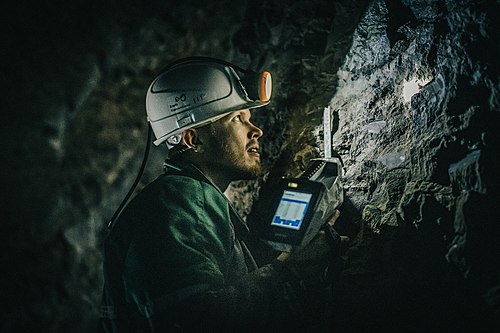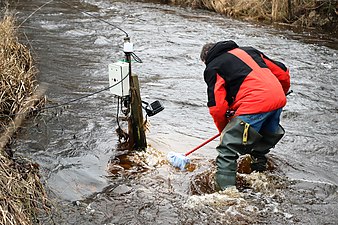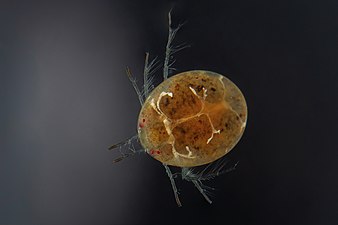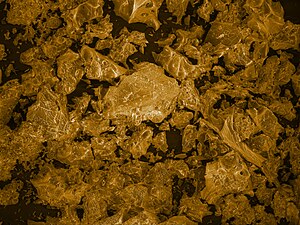Commons:Wiki Science Competition 2021/Winners/Estonia
Jump to navigation
Jump to search
Estonia · Finland · France and Monaco · Ireland · Italy · New Zealand · Macedonia · Poland · Russia · South Africa · Spain · Switzerland · Thailand · Ukraine · United States ··· The rest of the World
![]() These are the finalists for WSC2021 in Estonia.
These are the finalists for WSC2021 in Estonia.
This country-level selection had a specific national organizer and a national coordination page. 112 files were submitted by 29 uploaders (32 authors).
Jury[edit]
- the selection was performed manually.
- coordinator: Kruusamägi.
- the jurors were: Jaak Kikas, Ivo Kruusamägi, Ulvar Käärt, Jaan-Juhan Oidermaa, Arko Olesk, Urmas Tartes.
Finalists[edit]
| People in Science images from Estonia | ||||
National winner |
||||
| Geological fieldworks, underground in the Estonian oilshale mine to study the variable mineralogical and chemical composition and microstructure in the different layers of the oil shale profile. Peeter Paaver |
| |||
| Finalist | Finalist | Finalist | ||
| 360° panorama of TalTech Centre for Biorobotics with robotic fishes. Lauri Veerde | Hans Teras, the electronics engineer of ESTCube-2, with electronic components and soldering equipment. Laila Kaasik | Fish camera on Vääna River. Jaan Künnap
| ||
| Finalist | Finalist | Finalist | ||
| Students in the limestone fields, looking for fossils. Peeter Paaver | Students at the Science Battle 2017 in Tartu. Virgo Siil | Geological fieldworks in a underground Estonian oilshale mine. Peeter Paaver
| ||
| Microscopy images from Estonia | ||||
National winner |
||||
| Posterior view of the male terminalia of a fungus gnat species Clastobasis loici (Diptera: Mycetophilidae). The species is considerably rare in Europe and within the Nordic-Baltic countries found only in Estonia. The posterior view represents appropriately the three-dimentional and very complex structure with several spines and setae. Olavi Kurina |
| |||
| Finalist | Finalist | Finalist | ||
| Chironomidae larvae and what he feeds on. His stomach shows small Ostracod and one small alga (Mesotaeniaceae). Janek Lass | Freshwater "water mite" (Hydrachnidia) with white excretory malpighian system clearly visible. The white material they excrete consists mostly of salts. Janek Lass | Focus stack image of a mouth of an ordinary housefly. Janek Lass
| ||
| Finalist | Finalist | Finalist | ||
| Optical microscope image of neurons (Purkinje cells) located in the cerebellum of a dog. Note the nucleous in the middle of the cells and observe the tenticle like dendrites extening out of the pear shaped cell bodies. The cell bodies are attached to the granular layer of the cerebellum (right), while the dentrites are located in the molecular layer area (left). Lennart Rikk | Image of a sample being prepared for viewing with a transmission electron microscope in University of Tartu. Image taken with a scanning electron microscope. Markus Otsus | SEM image at the edge of a hole, that was shot into the wood veneer using a 40W CO2 laser. The fibrous structure of the wood is well visible in the picture, which is due to the good depth of field of the scanning electron microscope, which is an advantage of this method over optical microscopy. Kent Gregor Mahla & Maido Merisalu
| ||
| Non-photographic media from Estonia | ||||
National winner |
||||
| The Wilson cloud chamber is a container in which supersaturated ethanol vapors are located near the cooled surface. In this case, an aquarium and a baking sheet, cooled from below with dry ice, was used. When alpha radiation sources are placed in such a chamber, alpha tracks begin to form from condensed ethanol, from the passage of a charged alpha particle through it. Maxim Bilovitskiy |
| |||
| Finalist | Finalist | Finalist | ||
| Making thermal cards based on cholesteric liquid crystals. Maxim Bilovitskiy | Video of an ostracod. Janek Lass | A small colony of Cristatella mucedo. Janek Lass
| ||
| Wildlife & nature images from Estonia | ||||
National winner |
||||
| A waterspout over lake Peipus. The photo is taken on August 19, 2021. This is apparently the first report of a waterspout observation over the northern part of lake Peipus, which can be considered as a new local indicator of climate change. Viktor Palm |
| |||
| Finalist | Finalist | Finalist | ||
| Monitoring the spread of invasive species Rosa rugosa in Lahemaa National Park. Thaisa F. Bergamo | The melting Sólheimajökull glacier in Iceland. Maxim Bilovitskiy | Drone view of hexagonal basalt columns in Stuðlagil canyon in Iceland. Maxim Bilovitskiy
| ||
| Finalist | Finalist | |||
| The head of Ctenolepisma longicaudatum is covered by scales and feathered setae. In recent years it has been reported from several regions in northern Europe. Olavi Kurina | Northern pike photographed in Lääne-Viru County. Christian Koitve |
| ||
| General category images from Estonia | ||||
National winner |
||||
| Students of geology describing a limestone coresample in Estonian geologycal survey base in Arbavere. Peeter Paaver |
| |||
| Finalist | Finalist | Finalist | ||
| A Large Ion Collider Experiment (ALICE) is one of the largest physics experiments in the world. On the picture, the detector is opened for maintenance and upgrades. Panorama of 12 images. Andres Tiko | ESTCube-2 BUS printed circuit boards. Laila Kaasik | Disconnected quadrupole electromagnet for focusing heavy ion flux in the GSI park in Germany. Maxim Bilovitskiy
| ||
| Finalist | Finalist | Finalist | ||
| Trilobite fossil in Estonia. Enel Lepik | Yellow impurity in reaction product. Verner Sääsk | 360° panorama of TalTech Laboratory for Self-Driving Vehicles. Lauri Veerde
| ||
| Image sets from Estonia
| ||||
| National winner: studying materials characterization methodologies in the film technology laboratory of the Institute of Physics of the University of Tartu. Kent Gregor Mahla & Maido Merisalu |
| |||
|
| ||||
| Finalist: Geological fieldworks, underground in the Estonian oil shale mine to study the variable mineralogical and chemical composition and microstructure in the different layers of the oil shale profile. Peeter Paaver |
| |||
|
| ||||
| Finalist: Winter wheat breeding in Estonia. Reine Koppel |
| |||
|
| ||||
| Finalist: 60 kW CFB-stend in the Research Laboratory of the Department of Energy Technology in TalTech vs the Eesti Energia Enefit280 oil shale plant in Auvere, that process up to 280 tons of raw material in one hour. Lauri Veerde |
| |||
|
| ||||
| Finalist: From coffee bean to instant coffee. Heiti Paves |
| |||






















































